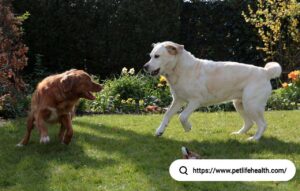We must explain to you how all seds this mistakens idea off denouncing pleasures and praising pain was born and I will give you a completed accounts off the system and expound the actually teaching.
Business
Labrador Retriever Puppy Breed, Health & Many More 2025
Labrador Retriever Puppy

Labrador Retriever Puppy, one of the most well-liked dog breeds, is seen in a field. A high-energy, water-loving family dog, the Labrador Retriever, may already know you. You could always meet them.
The Labrador Retriever is a strong, powerful dog. They have a powerful body and muscular legs, and they almost have a fair look.
Knowing that the Labrador Retriever is one of the most popular dogs in the country, it is not a coincidence (and in much of the world). Discover more about this gentle dog breed in the following paragraphs, from its origins as a hunting dog to how to take care of your Lab best friend, so you can determine if getting a Labrador Retriever is the perfect choice for you.
Labrador Retriever History:
Labrador Retriever Puppy Some of the multipurpose dogs used by hunters in North America (mostly Canada) in the early 1800s were sent back to England. However, the smaller ones were sometimes referred to as “St John’s” dogs. Many of these “water dogs” were of the Newfoundland breed. The current breed that we know and love was bent in England, likely with some flat-coated retriever contribution.
Labrador retrievers were established and chosen for their special retrieving skills, specifically in water, as suggested by their name. They have worked with duck pursuers in a variety of temperatures and conditions. Their cleverness and eagerness to collaborate with humans have led to various careers and their current status as well-liked pets. Today, Labradors are excellent service and guide dogs, companions on the hunt, family pets, military scenting dogs, customs and arson task force dogs, search and rescue dogs, and performing dogs.
The breed has become the most popular in America because of its sweet nature, and it plans to stay there. Notwithstanding being well-known as house pets, they actually feel more at home outside…It is central to keep in mind that Labradors are logically water retrievers, which explains why puppies show a strong urge to carry stuff and an early interest in water with puddles.
Labrador Retriever Personality:
Labrador Retriever puppies are great family friends, but only if you keep in mind that they need to be skilled and drilled. These dogs were raised to work diligently, and they liked having things to complete, especially regaining.
As long as training has tamed their natural energy, labs are often fine with other dogs, other pets, and kids. They are powerful dogs that require early professional training to prevent them from pulling their owners down the street at will.
Due to their energetic personality, Labradors who are not properly exercised or who are left alone can become destructive, excessively chewing, digging, and barking.
While some of the display line dogs grow up to be excellent couch potatoes, the field line dogs are particularly high-energy pups. Since they have a great drive to recover things, chewing might be a problem. Exercise, training, and sturdy chew toys all support this. The Labrador Retriever was developed to be amiable with both people and other canines. Their professional background gives them a high-energy, brave, passionate demeanor to go along with their soft disposition.
Because of their intelligence and curiosity, labs make good assistance dogs, but this might also mean that your stubborn Lab is more likely to escape or go without a trace after following something intriguing (squirrel?). For this purpose, a lot of Labrador Retriever dog holders choose to chip their pets.
Labrador Retriever Puppy was advanced to be outgoing with both people and other dogs. Their professional background gives them a high-energy, brave, passionate personality to go along with their soft nature.

Size:
Weight of Range:
Male: 65-80 lbs.
Female: 55-70 lbs.
Height at Withers:
Male: 23
Female: 22
Features:
Floppy ears (naturally)
Expectations:
Exercise Requirements: 40 minutes/day.
Energy Level: Average
Longevity Range: 10-12 yrs.
Tendency to Drool: Low.
Tendency to Snore: Low.
Tendency to Bark: Low.
Tendency to Dig: Low. Social/Attention Needs: Medium.
Labrador Retriever Living With:
Labrador Retriever Puppy Obviously, Labradors have a variety of lovable qualities, or else they wouldn’t be so well-liked. The fact that they want to work with people contributes to their intelligence and relative ease of training. They are “easy keepers” and risk gaining weight if not given the proper amount of activity and food quantities. Due to their want to be around people and the fact that many do not fare well in kennels, labs make wonderful family dogs.
Labradors do tend to guard their family and homes, but they also like meeting new people. If they are not given the right toys and direction, they may turn into destructive chewers due to their strong retrieving drive. The easiest way to stop a lab from “mouthing” someone is to give them a toy to carry about, filling their lips with toys already. Due to their strength, these dogs require early training in order to develop good lead manners.
This breed earns high marks for shedders thanks to the excellent double coat that keeps the Labrador warm when retrieving in freezing water. In most cases, short weekly grooming is sufficient for their coats, but during shedding season, daily grooming is required. The quantity of exercise needed varies by line; show line dogs only need modest exercise, whereas field line dogs can run continuously.
The Labrador Retriever breed’s appearance
Labrador Retriever Puppy has a big head and a short to medium-length, thick coat. A lab is the ideal water dog because of its webbed toes, which help them navigate through the muck, and their swimming-friendly otter tail (and knocking things off your coffee table). In unkinder situations, their foot webbing acts as a “snowshoe” to avoid snow and ice from attractive caught on their toes.
Labrador Retriever puppies can be born in a range of colours, as well as yellow, brown, and black. The silver Labrador Retriever has stunning blue eyes and an unfamiliar grey pallor. However, it may sound like it, a “golden Lab” is really a hybrid between a Golden Retriever and a genuine Labrador Retriever, not a tan of the breed.
There are two different body kinds among Labs. The “American” form, often known as the field or working variety, has longer and less thick hair, a smaller head, and a longer snout. They frequently exhibit increased levels of vigour and activity. These Labs are designed to function; therefore, this is not an accident.
Shorter legs, a thicker coat, and a large head are typical characteristics of the “English” or show type of Labrador Retriever. This type works best as a family pet.
Labrador Retriever Puppy will often shed twice a year or all year in temperate areas, depending on the individual dog. Similar to most dogs with double coats, a weekly brushing routine (or daily brushing during shedding months) ought to be sufficient to prevent the dreaded blowout of the undercoat.

The Ideal Environment for a Labrador Retriever
A Labrador Retriever dog requires a lot of animal motion and out-of-doors time. They also like retrieving, as proposed by their name. A huge hedging or a place close by for an extensive game of fetch will be the perfect home for a lab. These dogs are an accepted breed for an energetic family because of their demonstrative nature and prized play.
The Ideal Human for a Labrador Retriever
Labrador Retriever Puppy Labrador Retriever’s ideal human friend enjoys playing just as much as their dog does. Long walks and runs, swimming, or kicking a ball around are all examples of this.
The Lab’s background as a working dog, however, also implies that daily walks are insufficient for exercise. Your Lab will remain content with trick training, puzzle toys, and other intellectually taxing games like hide and seek.
Lab Obey Training
Labrador Retriever Puppy Lab will perform basic obedience training with constant positive attention and will soon be prepared to go to more difficult activities. Although labs are prone to distraction, this may be readily avoided by giving them lots of mental and physical activity and by teaching them new skills in places where they can concentrate quietly.
Labrador Retriever Puppy The ability to learn new things quickly and their laid-back temperament make Labrador Retrievers outstanding assistance dogs. Labs are able to do complicated activities, including rolling a person into the recovery position or activating an emergency communication device, serving as companions to persons with diseases or weaknesses.
The most productive guide dogs, in the opinion of Guide Dogs for the Blind, are labs. This highest smeller is qualified to work in search and rescue and is especially well-suited to more difficult tasks like water rescue. Labrador Retrievers are the real dog hero.

Labrador Retriever Grooming
Labrador Retriever Puppy The majority of Labrador Retriever owners will find grooming to be rather simple. Labradors have a thick double coat, and in the spring and fall, they lose their undercoat (or year-round in temperate climates). You may assist them in losing their fur throughout the seasonal shedding seasons by brushing them every day. For the remainder of the year, weekly maintenance brushing should be sufficient. Your Labrador Retriever could profit from the chance wash, specifically if they enjoy systematic around in putrid objects. Comparable best dogs, Labrador Retrievers should have their nails cut sporadically, and grooming is indorsed to keep their teeth strong.
Labrador Retriever Comfort
Labrador Retriever Puppy Dogs of the Labrador Retriever breed typically have minimal health issues. Elbow and hip dysplasia can occur in certain Labradors but less commonly than in other dog breeds. Furthermore, Labrador Retrievers are prone to eye subjects such as progressive retinal atrophy and knee snags. For further information about possible health concerns’ prevention or treatment, see your veterinarian. For peace of mind, many pet owners choose pet health insurance. A word about that never-ending game of fetch: some laboratories will keep working until they pass out. When playing, remember to take regular pauses for relaxation and hydration.
Getting a Labrador Retriever
Labrador Retriever Puppy Getting a Labrador Retriever is laid-back, but you would be organized. If you get a Lab puppy, you can guess to spend a lot of time schooling it basic respect, announcing it to other dogs and humans, and instructing useful customs like going out through the night and consuming the potty alfresco.
A humble internet hunt might lead you to a Lab puppy or grown-up dog, but be wary of puppy mortars and online con. There are some systems to locate a consistent breeder, so it’s a good idea to ask about, tour the capacity before making a buying, and follow your make-up.

Labrador Retriever Set free
Labrador Retriever Puppy Adopting a rescue dog is another option for finding a Labrador Retriever. In contrast to pups, rescues frequently arrive spayed, neutered, and immunized. Many Labrador Retriever salvages come from individual owners who have given their pets up; these dogs are probably well-trained and socialized. If not, it doesn’t exclude you from cooperating with them. For further information on how to educate a dog that hasn’t had much structure or how to make a wounded dog feel safe and welcome, get in touch with a professional dog trainer.


Post Comment